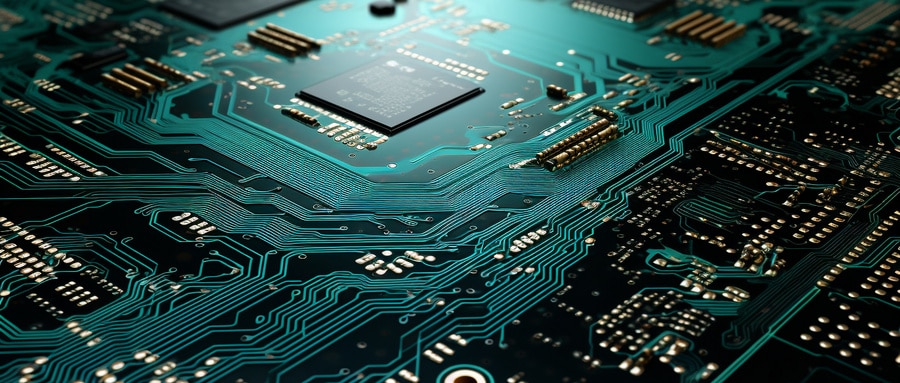Revolutionizing Electronics With Copper Core PCB – A Comprehensive Analysis
With today’s advanced technological world, printed circuit boards (PCBs) have become an indispensable element of everyday electronics. PCBs serve as the backbone for most devices and have evolved over time to meet the high-demand applications across various industries and verticals. One significant breakthrough in PCB design and manufacturing has been Copper Core PCB – a groundbreaking innovation which promises to propel electronic design and development forward at unprecedented efficiency and performance levels.
Copper Core PCB’s first appearance
Before understanding Copper Core PCBs, it’s necessary to review their history. Aluminium was traditionally used as the core material of PCBs; its primary goal being heat dissipation – an essential feature in PCB design. While satisfactory in some applications, modern high-frequency and power electronic devices soon revealed limitations with aluminium PCBs which necessitated searching for alternatives – entering Copper Core PCB.
Copper has superior thermal conductivity, making it an attractive candidate for PCBs due to their thermal conductivity. Industry quickly adopted this idea and thus Copper Core PCBs came about; these PCBs use solid copper substrate as the core rather than aluminium as they contain no aluminum core material.
Manufacturing Process
Copper Core PCB manufacturing entails several key steps: designing, etching, drilling, plating and assembly. With modern innovations simplifying this process to more effectively handle copper. However, precision is of utmost importance for its success and any errors could have serious repercussions for both its performance and that of any devices it powers.
Benefits of Copper Core PCB
- Thermal Management: Copper offers superior thermal conductivity than aluminium, providing more efficient heat dissipation. As such, copper Core PCBs are an ideal choice for high power/frequency electronic applications.
- Mechanical Strength: Copper PCBs have proven more durable and long-lived than their aluminium counterparts in terms of mechanical strength. Their robust nature provides added longevity to electronics they’re being used with.
- Enhanced Performance: Devices made with Copper Core PCB can function more effectively and efficiently, increasing performance by managing heat better.
Copper Core PCB finds use across various sectors due to its outstanding features. These applications may include:
- Aerospace: Weight plays a key factor when designing aeronautic devices; using lightweight Copper Core PCBs helps bring down device weight without compromising performance.
- Automotive: High power LED lights, power converters and regulators found in cars utilize copper PCBs.
- Copper Core PCBs excel at handling power supplies and converters that deal with high frequencies and power sources, such as converters.
- Medical Devices that need efficient heat management often rely on Copper Core PCBs.

Copper Core PCBs: Exploring The Future
Copper Core PCB offers numerous advantages and has a diverse application base, so its future seems promising. As we move toward miniaturizing electronics devices and demand more powerful solutions, Copper Core PCB could prove itself as an attractive solution.
Copper Core PCBs are on their way to becoming game changers in the world of PCBs, thanks to improved manufacturing processes and wider acceptance across industries. Now we are standing on the threshold of this future, having an in-depth knowledge of Copper Core PCB is key in appreciating and harnessing this groundbreaking technology.
FAQ:
- Q: What is a Copper Core Printed Circuit Board?
A: Copper Core Printed Circuit Board is a type of PCB where the core material in the board is made of copper. This facilitates great heat dissipation, making it an excellent choice for high power and LED applications. - Q: What are the main advantages of using a Copper Core Printed Circuit Board?
A: The main advantage is improved heat dissipation. Copper has excellent thermal conductivity, which helps in cooling the PCB and prevents overheating. They also offer good electrical conductivity. - Q: Are Copper Core Printed Circuit Boards expensive?
A: Copper Core Printed Circuit Boards can be more expensive than standard FR4 PCBs due to the higher cost of raw materials and the complexity of the production process. - Q: What applications commonly use Copper Core Printed Circuit Boards?
A: High power applications, LED lightings, automotive lighting, power converters, and various electronic devices that produce excess heat typically use Copper Core Printed Circuit Boards. - Q: Is the fabrication process of Copper Core Printed Circuit Boards different from standard PCBs?
A: Yes, the fabrication of Copper Core Printed Circuit Boards is quite different and a bit more complex than regular PCBs because of the properties of copper. - Q: Are Copper Core Printed Circuit Boards heavier than traditional PCBs?
A: Yes, due to the copper core, these PCBs are typically heavier than traditional PCBs. - Q: What are the thermal properties of Copper Core Printed Circuit Boards?
A: Copper Core Printed Circuit Boards have excellent thermal properties, with high thermal conductivity, allowing for the efficient transfer and dissipation of heat. - Q: How do I design a Copper Core Printed Circuit Board?
A: The design process is similar to a standard PCB, but consideration must be given to the higher thermal and electrical conductivity of the copper core. - Q: How can I maximize the thermal benefits of a Copper Core Printed Circuit Board in my design?
A: Heat-producing components should be placed as close as possible to the copper core to maximize the thermal dissipation benefits. - Q: Are Copper Core Printed Circuit Boards recyclable?
A: Yes, Copper Core Printed Circuit Boards can be recycled. The copper can be extracted and reused, making them an environmentally conscious choice.























